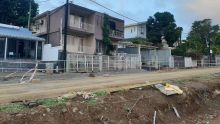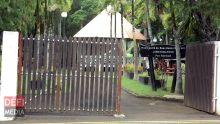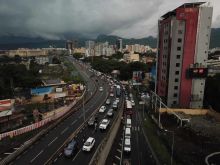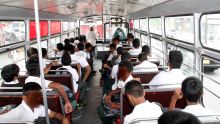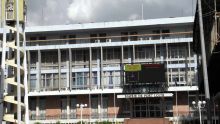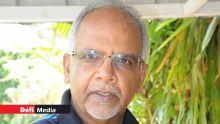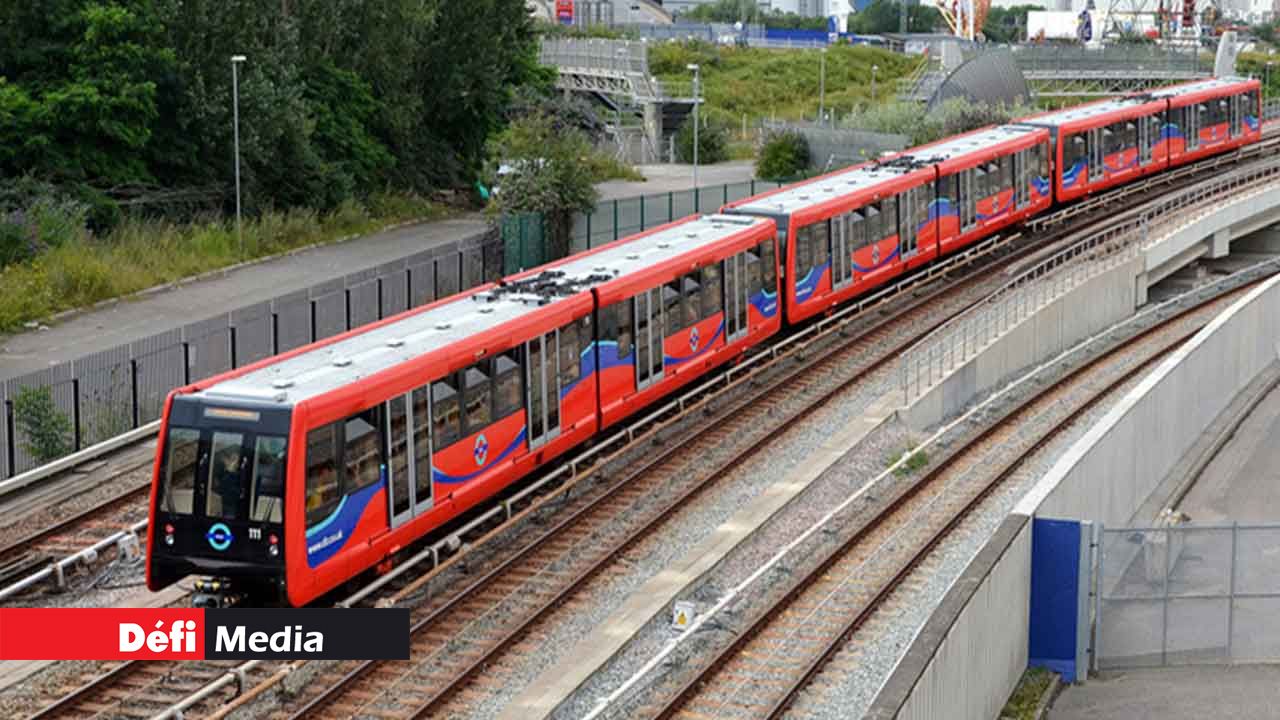
The government is determined to go ahead with the Metro Express project, despite doubts about its viability by various stakeholders, including politicians, economists, trade unions and civil society. If all goes well, the first train will depart from Curepipe station in early 2021. But the Metro Express track seems laden with obstacles.
The Metro Express, one of the biggest projects ever to be implemented in Mauritius, is set to be a reality. The Singapore Cooperation Enterprise (SCE) has reviewed the cost and submitted a new concept in October last year. Thus, the initial cost of Rs 31 billion has been reduced to Rs 17.7 billion, following modification of the project. The operating figures of the project have been calculated on daily passenger volume of 80,000 in each direction. The train fare will be aligned on that of current bus fare. The project will initially focus on the Curepipe-Port Louis corridor, with provision for future extension to the north and south of the island. India is contributing Rs 9.9 billion towards the realization of the project, leaving the government with a few options to finance the rest. It may raise a loan from a local consortium of banks, or turn abroad or solicit a line of credit from India.
Protests
Many forms of protests are in the making. A National Common Front comprising of various groups is planning a street protest. The Front includes social workers, transport sector workers and residents who face compulsory acquisition of their properties. More than 90 plots of land will have to be acquired by the government. They are asking for more information from the government on the project. There is also misinformation spreading around. For example, the Ministry of Public Infrastructure has had to clarify that the football ground at Camp Chapelon will be spared by the project to dispel rumours that the football ground would disappear.
The project continues to spark debates among the political class, trade unions, public transport workers, consumer associations, economists and the public at large. A project of this magnitude is not easily convincing and various stakeholders have some apprehensions. Transport workers have started agitating, feeling concerned about possible redundancies, though the Transport Minister has reassured that there will be no job loss. On the other hand, members of the public are not happy with the indirect consequences of the project: the disappearance of green areas, playgrounds, markets, etc, as these have to make way for the light rail tracks. In the wake of protests, the government has stated that no undue pressure will deter it from this endeavour.
The ‘Association des Consommateurs de l’île Maurice’ (ACIM) is one of those against the project. ACIM Secretary General, Jayen Chellum, says he is not convinced of the viability of the project. His organization had produced a report on the Light Rail Project in 1995 and they are more in favour of a ‘bus lane’ option. ACIM fears the Metro Express will be a heavy financial burden on taxpayers and ultimately consumers.
Comparaison
The duration of a metro trip between Curepipe and Port Louis is estimated at 43 minutes. The track will have 19 stations. As a comparison, in London, the Docklands Light Railway covers a distance of 10 kilometres in 30 minutes, between Lewisham and Stratford, through 18 stations. On the District Line, a trip between Gloucester Road and Upton Park lasts 40 minutes and the 20-km track goes through 22 stations. In India, the Delhi Metro has a track length of 24 kilometres between Chandni Chowk and Arjangarh, and counts 20 stations, with travel time of 43 minutes.
 The automobile park
The automobile park
The national vehicle fleet on our roads is expanding steadily. At the end of January 2017, there were 509,719 registered vehicles on our road. Cars represented 34% of the total whilst two-wheelers accounted for nearly 41%. There are only 3,097 buses on our roads. To increase traffic fluidity, a Road Decongestion Programme was stated in 2008. During the past six years, there has been a real explosion in the number of two wheelers as more and more people are opting for this transport method due to failing public transport services. The transport sector employs about 20,000 persons.

Arvind Nilmadhub: “We need to consider all implications »
Economist Arvind Nilmadhub says he is in favour of a light rail project in Mauritius, despite the high costs. “A project cannot be measured solely in terms of its financial viability. Mauritius indeed needs a modern transportation system, but we should not introduce the metro for the sake of introducing it. We must be convinced whether it is going to solve our problems.
 For more than 20 years, we have concentrated on the Curepipe-Port Louis corridor, but in the meantime, congestion has spread across the island, such that the metro will not solve all our congestion problems. It is necessary to have an integrated transport system built around the metro, which itself must later be necessarily expanded to the north, south and the east. In parallel, we should work on other plans for other areas. It is also time to reorganise the public bus transport system and not wait for the metro to arrive to do so. For example, many existing buses will have to become feeder buses to the metro stations. Excess buses will have to be redeployed on other routes,” says Arvind Nilmadhub. He has also raised the issue of power consumption. “It has not been revealed yet whether the trains will run on diesel or electricity. If we have electric train, will they consume renewable energy or traditional fossil fuel energy? If that is the case, then the CEB will have to increase capacity, so this is an indirect cost, but also an increase in pollution. Finally, we need to be told whether the free transport for students and pensioners will be extended to the metro,” he concludes.
For more than 20 years, we have concentrated on the Curepipe-Port Louis corridor, but in the meantime, congestion has spread across the island, such that the metro will not solve all our congestion problems. It is necessary to have an integrated transport system built around the metro, which itself must later be necessarily expanded to the north, south and the east. In parallel, we should work on other plans for other areas. It is also time to reorganise the public bus transport system and not wait for the metro to arrive to do so. For example, many existing buses will have to become feeder buses to the metro stations. Excess buses will have to be redeployed on other routes,” says Arvind Nilmadhub. He has also raised the issue of power consumption. “It has not been revealed yet whether the trains will run on diesel or electricity. If we have electric train, will they consume renewable energy or traditional fossil fuel energy? If that is the case, then the CEB will have to increase capacity, so this is an indirect cost, but also an increase in pollution. Finally, we need to be told whether the free transport for students and pensioners will be extended to the metro,” he concludes.
 Zohra Gunglee: « Efficient planning is a must »
Zohra Gunglee: « Efficient planning is a must »
Zohra Gunglee, economist, is of the view that the metro project will transform the island, giving it a modern look, but she fears the project might not be viable. “Such a project requires massive investment, but do we have the critical mass of passengers to sustain it? Currently, we can already see how our buses run almost empty during the day. We need to plan about maintenance and replacement costs, and also about further investment. As we go along, technology will evolve and we will have to keep upgrading. Other factors which seem to have been overlooked include storage of trains at stations, especially the originating one and the final one. Do we have enough space along the proposed track? An alternative to the metro is a bus lane, and Rs 10 billion could have sufficed to modernize our road network, build flyovers and carve out a bus lane as well as investing in modern buses. On the other hand, the metro might rekindle the 24/7 economy, give a boost to new activities and foster new developments in station catchment areas. It seems that the decision to go ahead has already been taken, so we must ensure there is proper planning so that everything goes smoothly and efficiently.”

Notre service WhatsApp. Vous êtes témoins d`un événement d`actualité ou d`une scène insolite? Envoyez-nous vos photos ou vidéos sur le 5 259 82 00 !














